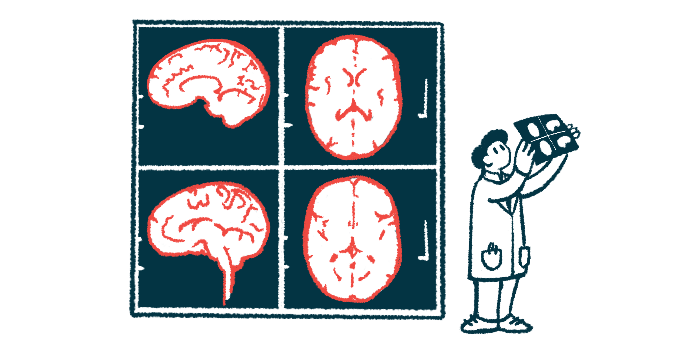Precision MRI system being used in trial of Parkinson’s stem cell therapy
ClearPoint Navigation System part of surgery to restore dopaminergic neurons
Written by |

A magnetic resonance imaging (MRI)-guided approach known as the ClearPoint Navigation System is being used in a Phase 1/2a clinical trial to enable the precise surgical delivery of ANPD001, an investigational stem cell therapy for Parkinson’s disease, its developer, Aspen Neuroscience, announced.
The open-label ASPIRO trial (NCT06344026) is evaluating the treatment’s long-term safety and efficacy at escalating doses in people with moderate to severe Parkinson’s, ages 50 to 70. A first transplant was performed earlier this year by Paul Larson, MD, a neurosurgeon, professor of neurosurgery at the University of Arizona College of Medicine-Tucson, and the trial’s lead investigator.
“To replace these lost cells, we must target a very specific area of the brain with a high degree of surgical precision,” Edward Wirth III, MD, PhD, Aspen’s chief medical officer, said in a company press release. “Utilizing the latest advances in intraoperative MRI guided techniques provided by the ClearPoint system, the patient’s new cells are transplanted … to the exact area where they are most needed.”
Induced pluripotent stem cells generated from patients’ skin cells
Parkinson’s is caused by the progressive dysfunction and death of dopaminergic neurons, nerve cells that produce dopamine, a major brain chemical messenger. These neurons primarily are present in the nigrostriatal pathway, which includes the substantia nigra and the dorsal striatum, brain regions involved in motor control.
ANPD001 uses a patient’s own induced pluripotent stem cells (iPSCs), a type of stem cell that can generate nearly all types of cells, to replace lost dopaminergic neurons in the brain. The process involves collecting skin cells from the patient and reprogramming them in the lab into a stem cell-like state. Using specific chemical or biological cues, these cells then are differentiated into dopamine neuronal precursor cells and returned to the patient via the transplant.
Specifically, the precursor cells are delivered to a region of the dorsal striatum called the putamen, where they are expected to mature into dopaminergic neurons.
To help ensure the precise delivery of these cells, the scientists are using the ClearPoint system during the surgical procedure. The system, which was developed by Larson, provides the surgeon with real-time navigational instructions and confirmation that the desired brain region has been reached, Aspen reported in its release.
The system’s cannula, a tube that can be used to administer therapies, is less than 2 mm in diameter, allowing for minimally invasive delivery of the cell transplant.
9 Parkinson’s patients expected to be treated with ANPD001 in trial
“The ClearPoint Neuro Navigation System is being used successfully in more than 80 centers worldwide for multiple applications, and investigational gene and cell therapy trials,” said Jeremy Stigall, chief business officer at ClearPoint Neuro. “We are thrilled to partner with Aspen to support the first multi-center trial for an autologous neuron replacement therapy for Parkinson’s disease.”
Up to nine Parkinson’s patients, invited by the study’s researchers, are expected to receive the therapy. The trial’s main goal is to evaluate treatment safety and tolerability, with secondary goals including increased on time, defined as periods without troublesome dyskinesia, or involuntary movements; changes in Parkinson’s motor symptoms; and improvements in patients’ quality of life.
Cell survival after the transplant will be assessed using imaging brain scans. Patients will be followed for five years after the transplant, after which long-term safety will be evaluated annually for 10 more years via telephone calls.






